US Self-Driving Cars Face Devastating Attacks: Vandalism, Assault, and Arson Cost Waymo $4.6 Million Overnight
![]() 06/11 2025
06/11 2025
![]() 633
633
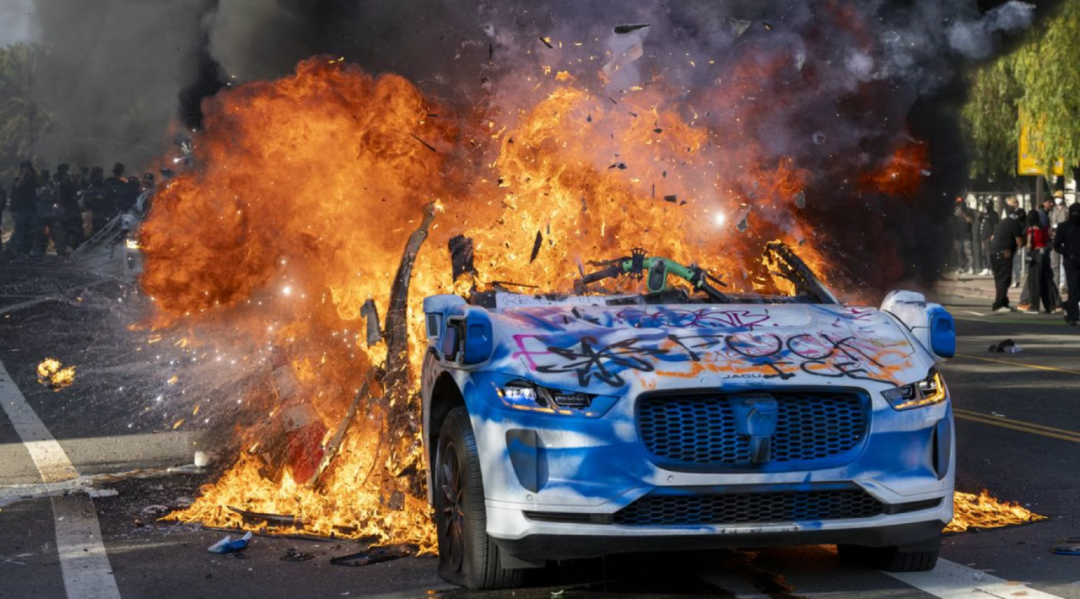
Taking the Blame
"
Author | Wang Lei
Editor | Qin Zhangyong
Beat, smash, kick, burn... One self-driving car after another was destroyed like this.
The latest news is that Waymo, the giant US Robotaxi company, has ceased operations in downtown Los Angeles, its primary commercial hub.
The reason behind this cessation is the large-scale protests by local immigrants against the Immigration and Customs Enforcement's (ICE) raids on illegal immigrants in the Los Angeles area.
As the situation deteriorated, the protests escalated into violent demonstrations, and Waymo self-driving cars operating in the conflict zone became the "most innocent" victims of the incident.
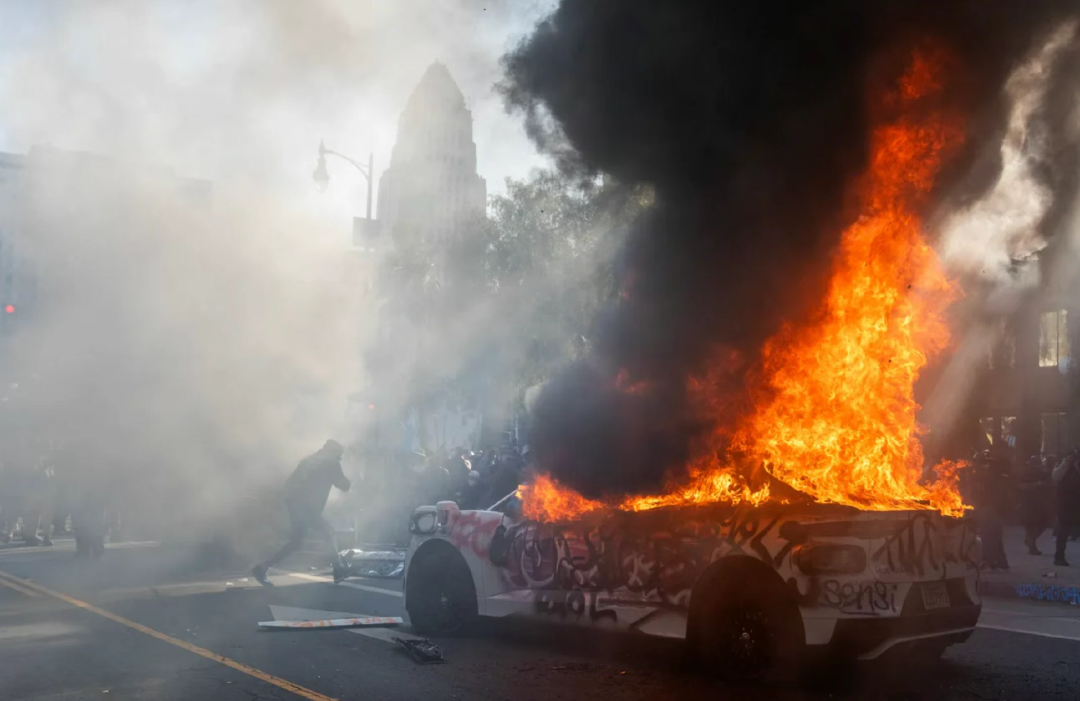
A spokesperson for Waymo, a subsidiary of Alphabet, also confirmed that five Waymo vehicles were damaged near the protest site during the riots that broke out in downtown Los Angeles on Sunday and could not be recovered.
Furthermore, Waymo has suspended operations in the protest area and relocated other vehicles to alternative commercial zones.
01
Waymo in Flames
The gravity of the situation can be seen in the image below:
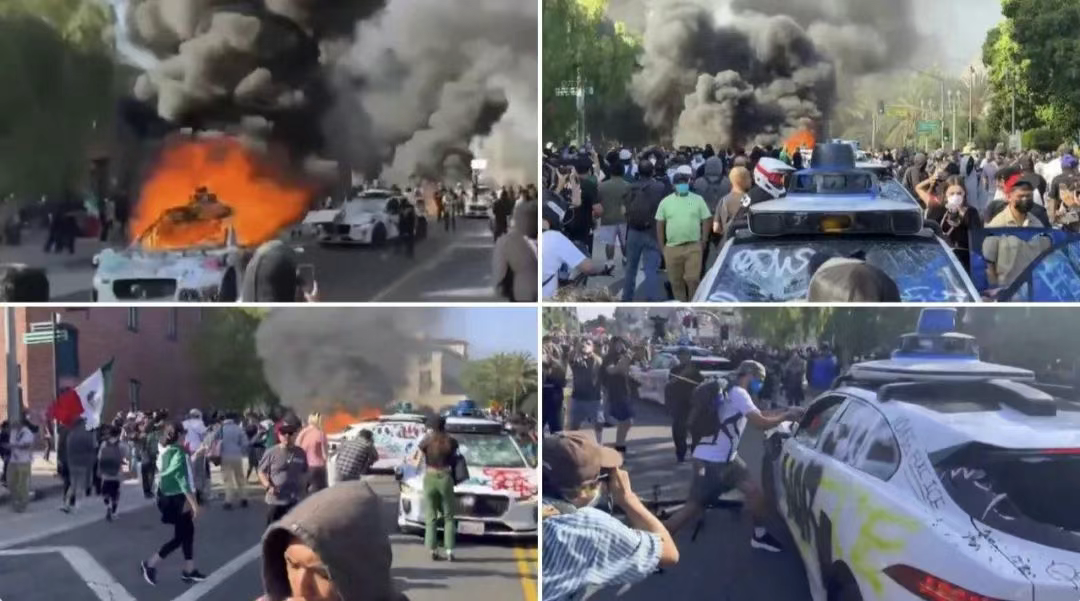
Clearly, in addition to being spray-painted with protest slogans, the vehicles were also set on fire and vandalized, with multiple cars at the scene.
Moreover, from the details in the photo, it is evident that the burned vehicles all have a prominent "hat" device on the roof, which is the 360-degree camera and LiDAR roof sensor on the self-driving taxi. Coupled with the style of the taillights and the location in Los Angeles,
It can be deduced that the burned cars in this photo are Waymo's self-driving taxis.
Although Waymo has collaborated with various models such as Jaguar, Lincoln, and Zeekr X, its autonomous driving fleet in Los Angeles is currently almost entirely composed of Jaguar I-Pace models.
Additionally, from other on-site photos, it is apparent that the burned models are predominantly Jaguar I-Paces, with Waymo's logo faintly visible on the doors.

As for why they became victims of vandalism and arson, it's because these cars were "tricked" into coming.
Around 6 p.m. on that day, protesters deliberately summoned vehicles through the Waymo app to a hotspot of protest against the federal government's immigration raids, near Arcadia Street in Los Angeles.
Initially, the protesters only graffitied on the vehicles, but as tensions heightened, it escalated into arson, prompting the Los Angeles Police Department to temporarily close traffic in the area.
Moreover, according to videos circulating online, more than one Waymo self-driving car was vandalized, with at least five Waymo self-driving cars "severely damaged" at the scene, and the conflict also resulted in multiple casualties.
Due to the safety hazards posed by the lithium batteries after they caught fire, the Los Angeles Police Department closed Los Angeles Street north of Arcadia Street and south of Alameda Street.
The authorities warned that "burning lithium-ion batteries release toxic gases, including hydrogen fluoride, which pose a danger to rescue personnel and nearby residents."
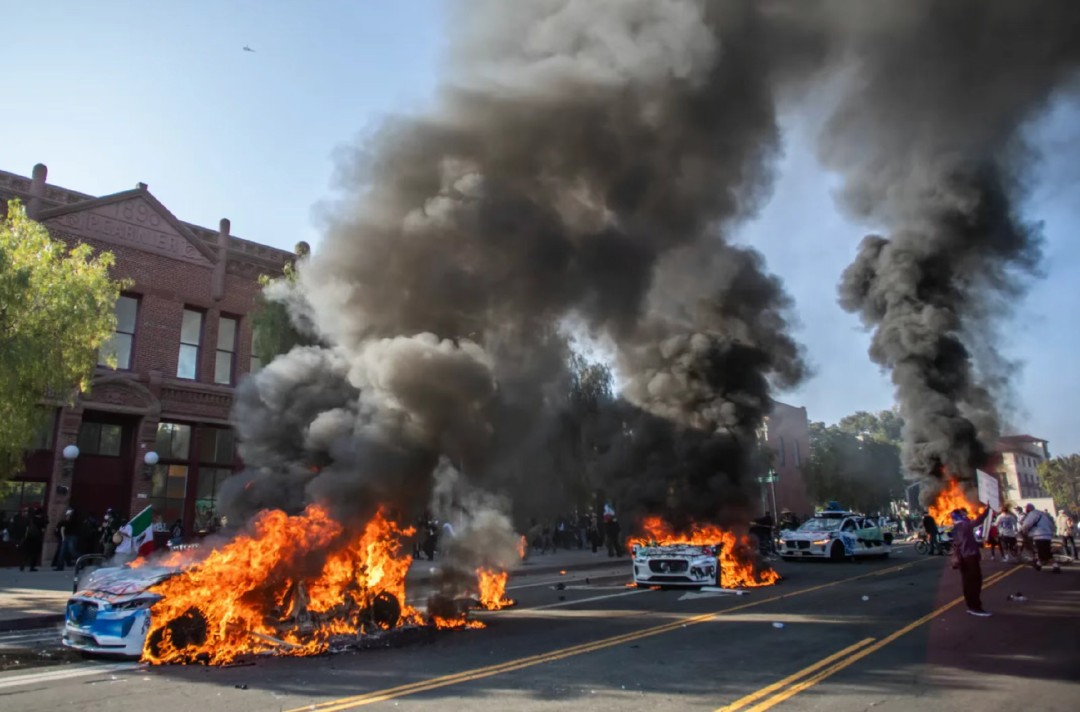
These burned Waymo self-driving cars are not cheap. Musk has repeatedly criticized Waymo's high costs, stating that "Waymo's problem is that it spends way-mo (too much) money, which is simply a losing business."
Taking the autonomous driving fleet in Los Angeles as an example, it uses the fifth-generation system equipped with 8 cameras, 5 radars, and 3 LiDARs. According to an overseas media outlet, the cost of a single vehicle is as high as $130,000 to $150,000.
The latest version is even more expensive. Waymo's latest sixth-generation system is equipped with 13 panoramic cameras, 4 LiDARs, and 6 radars.
This means that in this arson incident alone, Waymo's vehicle losses amount to at least $650,000 (approximately RMB 4.67 million), excluding operational losses.
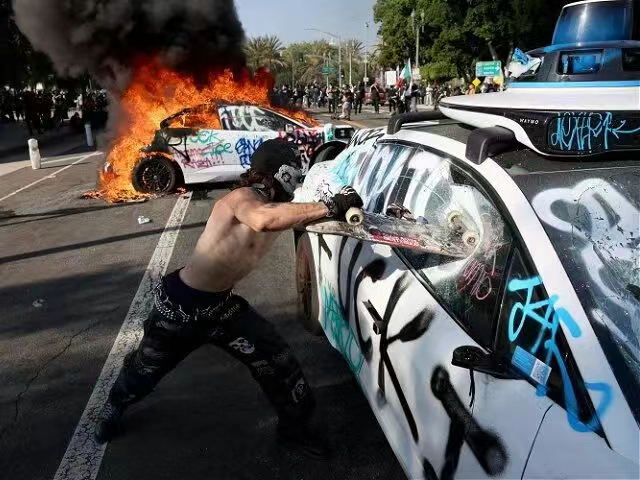
Given that Los Angeles and San Francisco are Waymo's primary operating areas for fully autonomous, all-weather commercial operations, in November last year, Waymo provided an average of about 8,800 rides per day in San Francisco.
Although data for Los Angeles has not been disclosed, it is expected to be not much lower than that of San Francisco.
02
An Easy Target
The trigger for this incident was the Trump administration's recent intensification of efforts to deport illegal immigrants. Since June 8, multiple rounds of protests have erupted in Los Angeles, with multiple clashes between the police and demonstrators, tear gas, rubber bullets, and stones flying, and the city entering a tactical alert status.
However, why did the protesters' anger turn towards Waymo?
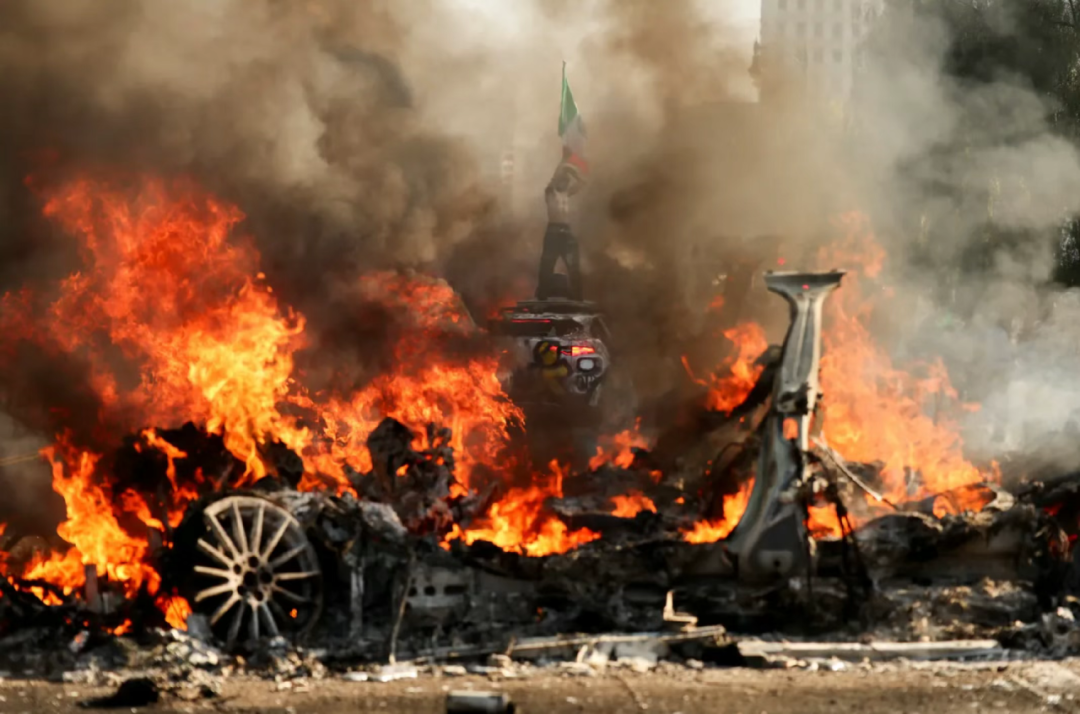
On platform X, many netizens have differing views. Some believe that the choice of Robotaxi is most likely because there is no driver in the self-driving car, making it easier for perpetrators to attack.
Others believe that this was a clearly organized act of sabotage, where the attackers were not only familiar with Waymo's vehicle scheduling logic but also used tools such as spray paint and crowbars to specifically target the core components of the autonomous driving system.
In fact, this is not the first time Waymo self-driving cars have been attacked by arson, and the targeting in the previous incident was even more apparent.
Early last year, during the Lunar New Year celebrations in San Francisco's Chinatown, a Waymo self-driving car happened to pass by. Due to a crowd blocking the road ahead, the Robotaxi chose to stop and wait for the crowd to disperse.
But suddenly, someone jumped onto the Robotaxi's hood and shattered the windshield. As the situation worsened, someone threw a lit firework into the car. The Robotaxi first began to smoke and then burst into flames.
By the time the local fire department arrived to extinguish the fire, the valuable Robotaxi was reduced to just its tires and chassis, with the cabin almost completely burned away.
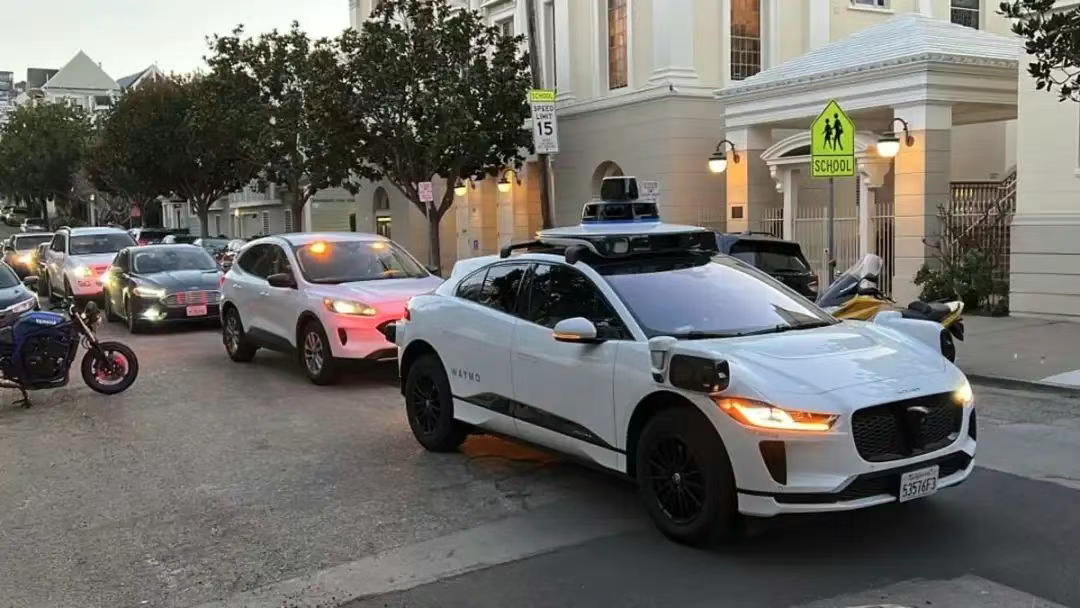
But the current situation is much more severe. Only one vehicle was attacked at that time, and operations were not suspended.
After this incident, Waymo immediately stated in an email: "We are in contact with law enforcement. These acts are completely beyond the scope of peaceful protest and are deliberate destruction of public property." Currently, Waymo has submitted all driving data to the Los Angeles Police Department to assist in the investigation.
However, from Waymo's perspective, this incident was not intentionally targeted at these vehicles (self-driving cars).
But it is undeniable that Robotaxi's "popularity" among the public is still very low.
As one of the giants of self-driving cars, in 2018, Waymo officially launched its self-driving cars in Phoenix. It is not only the only company in the United States that operates self-driving taxis and charges for them but also the world's first publicly operated self-driving taxi service.
Currently, Waymo provides commercial self-driving taxi services in San Francisco, Los Angeles, Phoenix, and Austin. Its autonomous driving fleet has over 700 vehicles. By the end of 2023, the total number of paid rides on Waymo exceeded 1 million, reaching 5 million by the end of 2024, and exceeding 10 million just halfway through this year.
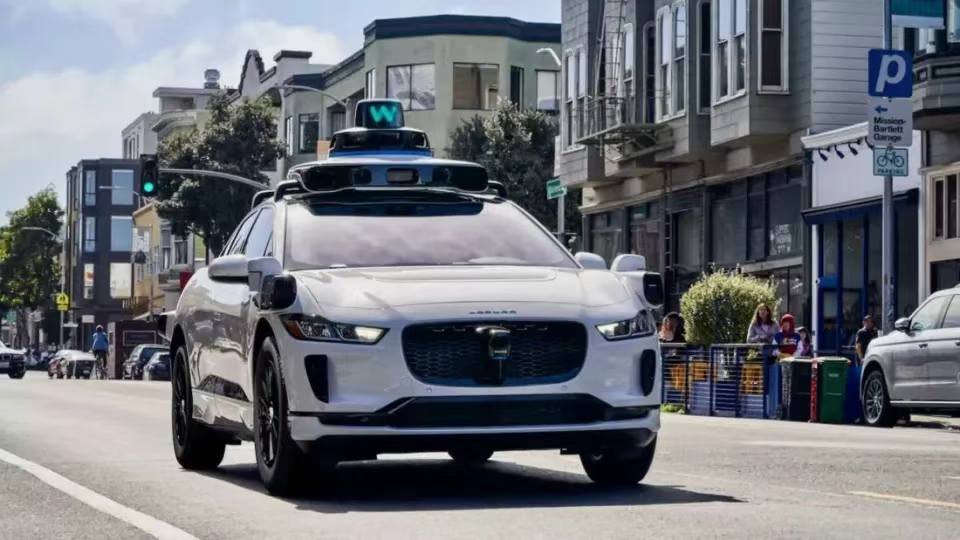
Although Waymo claims that its self-driving technology is safer than traditional driving, data shows that its vehicles have reduced pedestrian injuries by 92% and accidents involving bicycles and motorcycles by 82% in 56.7 million miles of driving, its trust with the public is still fragile.
In the past few years, conflicts between the public and Robotaxi have emerged one after another, with no less than four incidents occurring this year alone.
Earlier this year, a Waymo self-driving car was besieged by a mob near Beverly Center, with its windows smashed and doors torn off; on February 7, a Waymo self-driving car carrying four passengers was rear-ended by a speeding vehicle in downtown Los Angeles, injuring three passengers slightly and requiring hospitalization, and the driver fled the scene. This incident also raised questions about the ability of self-driving cars to respond in emergencies.
Not long ago, a Los Angeles resident blocked Waymo self-driving cars from entering a parking lot with cones and vehicles due to noise disturbance from Waymo charging stations, forcing Waymo to call the police six times. The resident was even served a temporary restraining order by Waymo for interfering with operations.
In May, due to the NHTSA expanding its investigation into its collisions with obstacles, Waymo recalled over 1,200 vehicles due to software defects. This series of negative incidents undoubtedly provided protesters with ammunition for the opinion that the "technology is unreliable."
When a series of conflicts arise, Robotaxi, being at the center of it all, inevitably becomes the most innocent victim.
Let's see when it can recover this time.







